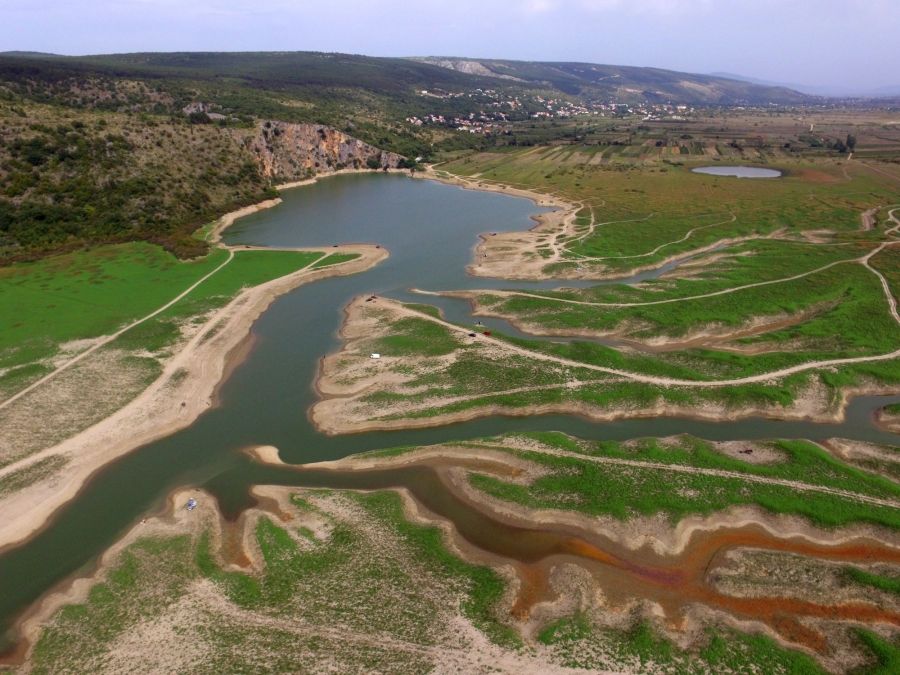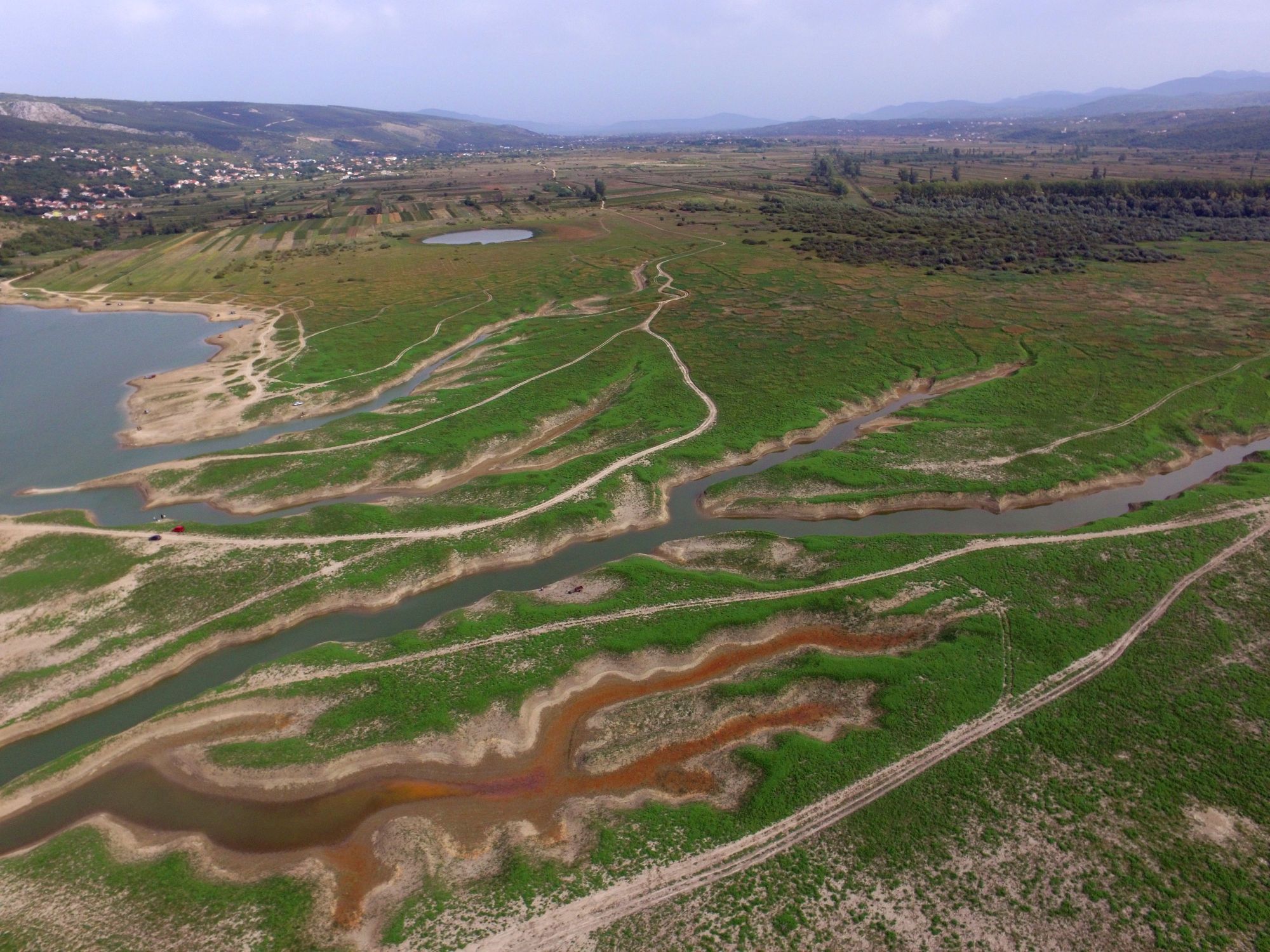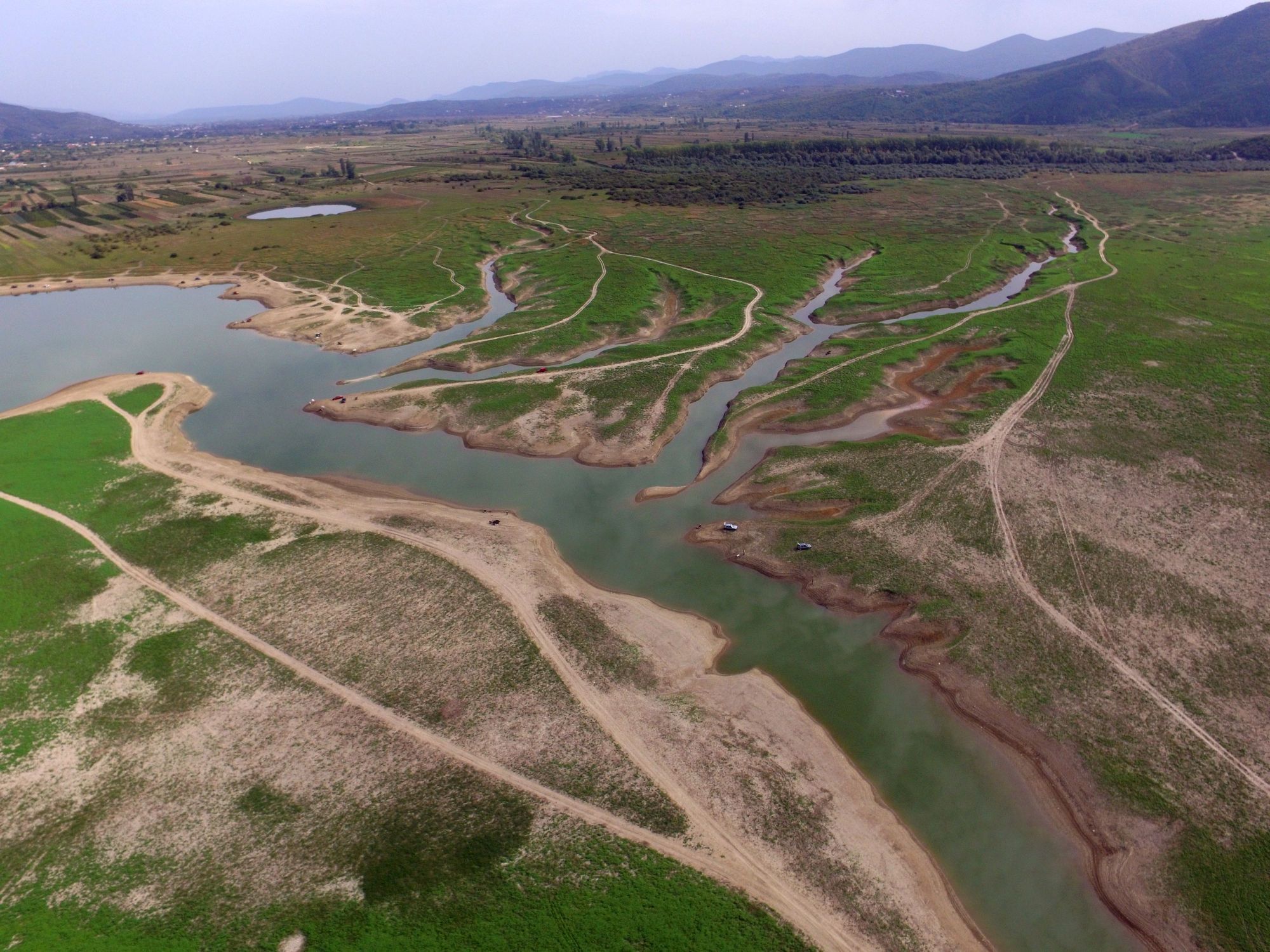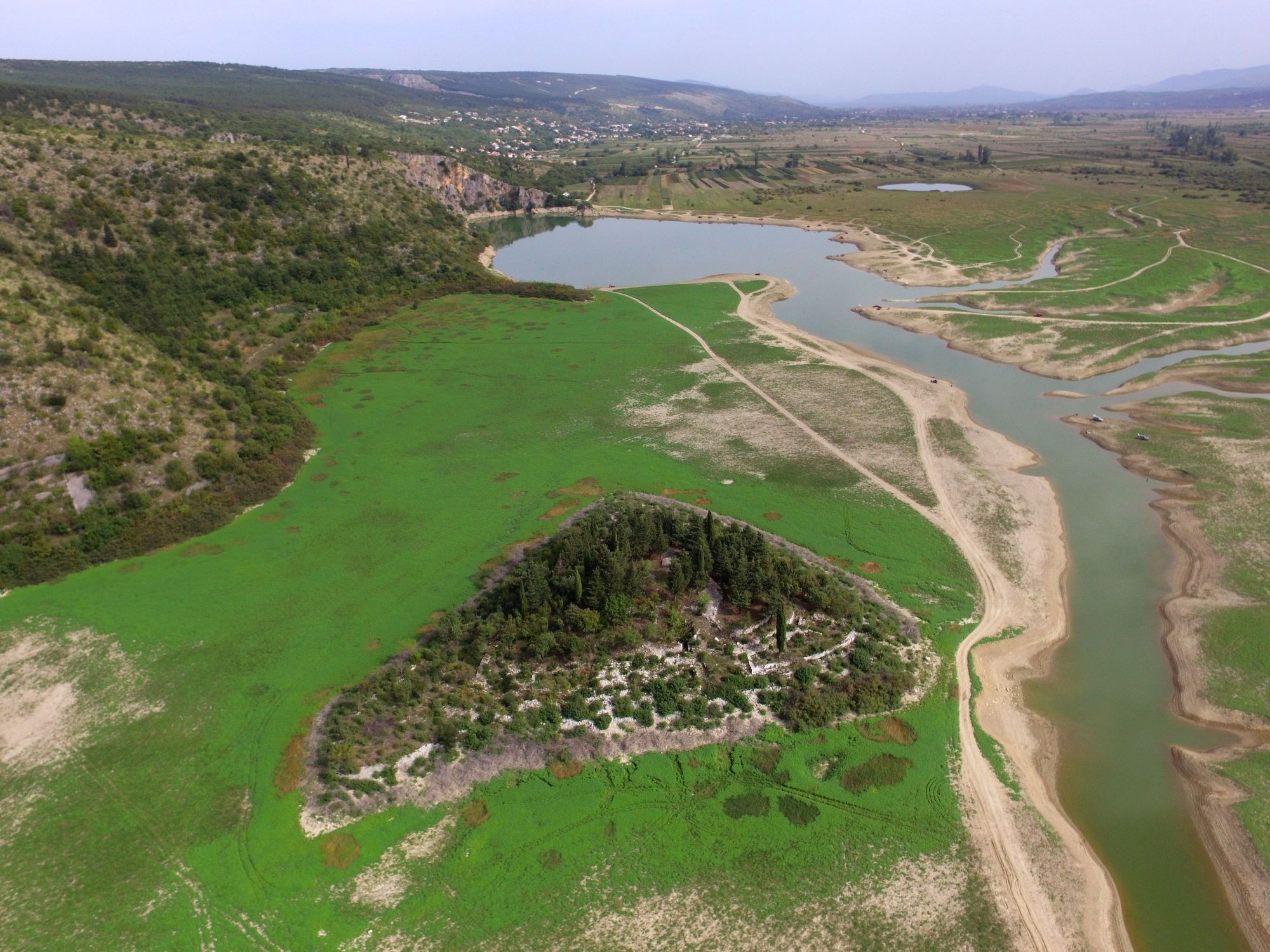Imotski Tourism in 2022: Tourist Board Director Reveals Big Plans
February 19, 2022 - Luka Kolovrat, director of the Imotski Tourist Board, speaks about Imotski tourism in 2022 and what's in store for the region.
Despite the pandemic, the past tourist year in the Imotski region was truly memorable. This was confirmed by more than 100 thousand overnight stays, an increase in the number of luxury accommodation facilities, and a record number of visits to the natural beauties of Imotski and its surroundings. All this additionally motivated the tourist workers in the area to prepare as well as possible for the upcoming season, even though the coronavirus could dictate it.
Luka Kolovrat, director of the Imotski Tourist Board, and his associates are currently preparing projects that will further strengthen the good marketing of local values presented to guests. Slobodna Dalmacija reports:
"The Tourist Board is only a small segment in the promotion of tourism in Imotski and the Imotski region because in the first place there are our renters. Last year we finished with 384 of them, and this season that number will be higher because in this part of the year, according to our data, the number of 400 hosts has already been exceeded.
I am optimistic, and if the pandemic subsides, I think we will exceed last year's record for overnight stays, and in that number, it was over 90 percent of foreign guests. In October last year, all renters received inquiries and booked part of their capacity, and then we had a lull of almost three months. Still, in the previous few weeks, we have seen an increase in inquiries from potential guests and reservations," says Kolovrat and adds:
"However, we must have a slight hesitation, although accommodation in the Imotski region is among the safest in Croatia due to the location of houses, separation from the center, and regular vaccinations of owners and members of their families. Thus, in 2020, at the national level, we had between 50 and 60 percent occupancy of tourist capacities, and in our country, up to 80 percent.
They are preparing several vital projects, too.
"We have started several multi-year projects, so we received almost 800 thousand kuna from the funds for the united tourist boards and from Split-Dalmatia County through a tender. That’s 60 percent of all our revenue. We expect a similar result this year as well.
Last year we arranged the first phase of the Camino Imota pilgrimage route, marked it, organized the first Camino weekend during which more than 150 pilgrims from various countries came. We also received an award from the Association of Croatian Travel Agencies for this part of the project. This year we are starting with the second phase, and we will organize the target weekend earlier, at the beginning of May, due to the expected excellent summer heat.
In parallel, we begin the third phase with which we close this story: the connection of our Camino Property to the pilgrimage route of Our Lady of Sinj. The Sinj Tourist Board worked on that route from Rama in BiH through Sinj to Solin, and we would now connect to Trin via Trilj.
We also have a long-term destination quality management project called "IQM Imota." Last year we had 30 partners who could educate themselves; they signed a book of standards and a commitment to stick to that level. In addition, more than 1,500 reviews of our guests were collected, and each stakeholder received a written report on how guests see it.
In 2021, we measured quality according to reviews of 95 percent, which is an exceptional result. Our goal is to increase the number of participants and the number of observed reviews.
We are also planning a big bike race that will combine sports, sightseeing of the Imotski region, meetings with our famous winemakers, then a chess game at the entrance to Blue Lake with one of our grandmasters. In addition, we will have a new brochure in collaboration with HGSS.
We are also impatient about entering the Geopark "Biokovo - Imotski Lakes" into the UNESCO system because it is our great asset. We got as many as 885 points from the evaluators out of a possible 1000, which is truly impressive.
We are waiting for the decisions of the UNESCO Council and the Assembly, whose indications are that we still need to finish some small things. There is still hope that we will enter it soon, but if it is prolonged for a short time, our entry is still safe," concludes the head of the Imotski Tourist Board.
For more on travel in Croatia, follow TCN's dedicated page.
Imotski Tourist Board Wins Award for New Project in Tourism
November 3, 2021 - The Imotski Tourist Board will be awarded the national Simply the Best award in the category New Project in Tourism. The award was given to the Camino Imota project by the Imotski Tourist Board, in cooperation with the Brotherhood of St. Jakov and the Croatian National Tourist Board, realized during 2021.
Let us remind you that after Krk, which joined the Camino family in 2019, Imotska Krajina received a section of this most famous network of pilgrimage routes. Camino Imota is a section on the general route Medjugorje - Sinj, within the Croatian road network Sv. Jacob. This section is also conceived as a separate tourist product, a motive for coming for a multi-day stay in the Imotski region, reports Turističke Priče.
Camino Imota passes by extremely interesting sacral buildings, but also important sites of natural and cultural heritage. At a total of 12 sites, there are also commemorative stamps for pilgrimage passports as proof of travel. Everyone with a completed pilgrimage passport in the office of the Imotski Tourist Board can get a certificate of the Compostela pilgrimage.
The Camino Imota is about 75 kilometers long, and it takes three days to cross the section. The beginning and end of the trail will be connected to the future route Sinj - Medjugorje. A large number of pilgrims walked the new Camino Imota route in June. Despite the high temperatures, their impressions are very positive, and this is not surprising given the spectacular landscape offered by the Imotski region.
The Simply the Best award for creativity, innovation, development, and improvement of the tourist offer of the destination is traditionally awarded by UHPA - the Association of Croatian Travel Agencies and the tourist magazine Way to Croatia.
The award will be presented to the Imotski Tourist Board at a ceremony on November 24 as part of the official program of this year's 22nd PUT Stock Exchange, which will be held from November 23 to 25, 2021 at the Katarina Hotel in Selce.
For more on travel in Croatia, follow TCN's dedicated page.
First Camino Imota Weekend Attracted Several Pilgrims to Imotski Region
June 24, 2021 - The first Camino Imota weekend, organized by the Imotski Tourist Board and the Brotherhood of St. James, gathered more than a hundred participants in three days. It was the first organized pilgrimage along the new Camino Imota route. In addition to the pilgrimage, an international round table, "Camino pilgrimage in the 21st century," and an exhibition of photographs were held.
The Imota Tourist Board organized a free bus transport from Imotski to the starting points of certain sections and a return to Imotski after the pilgrimage, whichh speaks volumes about the great interest in participating in the Camino Imota weekend, reports HRTurizam.
“Interest in the Camino Imota route, according to the number of pilgrims, but also according to the number of interested people who want to pass the route, is great. The Facebook group quickly gathered more than 600 members. On Tuesday, two days after the event, we already had the first individual pilgrims, who decided to cross the Camino Imota trail," said Luka Kolovrat, director of the Imota Tourist Board.
Several pilgrims walked the new Camino Imota route. Despite the high temperatures, their impressions are very positive, and this is not surprising given the spectacular landscape offered by the Imotski region. However, besides the natural beauties on the Camino Imota route, there are also numerous sacral buildings and significant sites of natural and cultural heritage. Pilgrims received commemorative stamps in their pilgrimage passports, which serve as a confirmation of the route crossed - Camino Imota Compostela.
“On the first day, we had about 40 pilgrims, on the second about 60, and the third about 90. Some of them walked all three days, and some only one, so we can say that more than 100 pilgrims visited the first Camino Imota weekend. We are pleased with the response, and participants expressed satisfaction with the trail. About twenty of them already had experience with Camino routes, especially the one starting from France. When they passed the route, they shared their impressions with us and gave us suggestions. According to them, the Camino Imota reminds of the trail through Galicia," says Kolovrat.
And for Camino Imota to fully justify its name, it is essential to cooperate with the local population, which on this first pilgrimage proved to be an excellent host by offering pilgrims refreshments along the way.
“In April, we held meetings with parish priests who are on the route and introduced them to our plans. They passed it on to their parishioners, which gave excellent results, and the residents of this area were pleased to help the pilgrims," said Kolovrat.
In addition to the pilgrimage on the new route, Camino Imota weekend also had an accompanying program in which a round table called "Camino pilgrimage in the 21st century" was included. The roundtable brought together representatives of Camino associations, priests, theologians, and scientists from as many as nine countries. A special guest was Igor Vidmar, president of the Brotherhood of St. James from Slovenia, who announced the arrival of Slovenian pilgrims on the Camino Imota trail next year.
“The Round Table, which was actually a video conference, discussed why people choose the Camino pilgrimage, whether it is for religious or adventurous reasons, and why the pilgrimage has gained so much popularity. At the moment, about one and a half million people are making a pilgrimage to the Camino, and that number is increasing every year," Kolovrat emphasizes.
The first Camino Imota weekend met the organizers' expectations, who are now facing the continuation of work on the route itself, to be even better marked. A mobile application is also planned, and a website is already online and should be filled with information about the route, instructions, and practical tips for pilgrims in the next few days.
“After the first Camino Imota weekend, which was a great success, we are even more optimistic, and I believe that this route will come to life in the future. Interested individuals already contact us, but also entire parishes, who want to take an organized walk along the trail," emphasizes Kolovrat and adds that the Camino Imota weekend also served as an agreement on intensifying works on the second phase, i.e., connecting the route to Sinj and Medjugorje.
For more, follow our travel section.
2nd August: Imotski Celebrates 300 Years
On the 2nd of August, 2017, Imotski will mark 300 years of liberating the town from the Ottoman Empire.
Imo-Adventure Back After 8 Years
After eight years, Imo-adventure returns to Imotski! This year on September 10, a new beginning will mark one of the best one-day adventure races in Croatia.
Imotski Discovered by the Ukrainian TV
After the Japanese TV crew last year, Imotski was visited by the Ukrainian TV these days. According to the Imotski tourist board, the goal of the Ukrainian was to make a documentary about Imotski for a very popular TV show.
New App: Visit Imotski
Imotski tourist board issued a new mobile app "Visit Imotski" as a way of promoting the Imotski area and informing guest about the tourist offer.
New Bill from the Ministry of Tourism - Inland Dalmatia Tourist Boards to Close Next Year
It might have been my 4th year at the University, when I attended a lecture about local management of a tourism destination given by a enthusiastic young men from Skalica (Slovakia). Sadly, I do not remember his name, but I remember the spark in his eyes as he talked about how much did they achieve in a little city using EU funding combined with various tools and techniques to get everybody to cooperate towards a common goal.
The common goal, surprisingly, was not to build an infrastructure for tourists visiting this area. All efforts with preparing projects, getting rejected so many times just to get 3 or 4 projects approved was to raise the quality of life for the locals in the first place. Why? Because, when a destination is authentic, with locals enjoying the place, participating in cultural and other events and loving it, that is what makes a destination attractive for tourists as well.
When travelling, people are looking for authenticity - to experience that particular culture and to explore and get to know the place. If the locals enjoy it and love it, they will easily show it to the guest by including him into their lives rather than making their lives about entertaining the guest.
It must have been this particular lecture that got me interested in management of a tourism destination. So I focused on that for the rest of my studies. When writing my final thesis I was amazed by the way Croatia is dealing with management of a destination - the network of local and regional tourist boards was huge and according to the law that regulated their operation, it should have been working out pretty well.
Now, this was the law in Croatia. As I came to live to Croatia, I soon discovered not everything written on a piece of paper is actually being transformed into real life and tourist boards are dealing with various issues, some more successful then others. But despite some problems, it seemed that Croatia is profiting from having such a large network of tourist boards to promote each corner of the country, as the tourism flourishes.
As it seems, this large network may come to an end with a new bill that was prepared recently and proposes to close all tourist boards that use more than 25% of their income on financing the operation of the tourist board (staff salaries) as of January 2016. As Slobodna Dalmacija informs, that would mean closing more than a half of the current tourist boards, most of them in Inland Dalmatia.
The public debate opened by the Ministry of Tourism ended today (July 12, 2015) so we will see how much of the objection from the Director of the Split-Dalmatia County Tourist Board Joško Stella and others will be taken into consideration.
Living on the Hvar island, where we have 5 tourist boards, which do not make an effort to promote the island as a whole destination, it was quite refreshing to get to know several tourist board directors from Inland Dalmatia. And as the director of the Sinj tourist board Jelena Bilić informed me, they actually meet on a regular basis to discuss issues related to their common destination. They cooperate, talk to each other and work towards branding the destination.
Sinj with the excellent Jelena Bilić is in a way a leader of this destination. But there are several others, that did so much with very little resources.
Vrlika has a relatively new tourist board director Dijana Maras. This very efficient young lady took over the position a year ago, where she immediately had to deal with the cultural program of the Vrlika Summer (including the famous opera Ero the Joker).

After the summer, there was time to focus on the accommodation issue as Vrlika had no official accommodation available. Zero beds, no apartments, nothing to actually stay over a night in the region when visiting. And with the new Medpaths project (4 hiking, 3 biking and 1 trekking trails) and the support from a very active Dalmatia Explorer, Dijana felt the opportunity to convince people to get into the business of renting their rooms and apartments legally. She put an extra effort by visiting people, talking to them, answering questions and encouraging them.
By the end of the year, Dijana prepared 2 educational workshops for all interested. People were mostly interested in what are the financial obligations when renting out an apartment, but apart from that, they got all sorts of interesting information such as how to communicate with guests, how to promote themselves, how to cooperate with an agency, how to furnish the space and many more. There was a tourist agency present to explain details about their way of business as well.
The result was from zero beds last year to 33 beds registered this year. And fingers crossed, depending on how this season will be, there might be many more interested for the next season.
This year, there are 47 villas with a pool and 10 others, together 57.
During those years, the tourist board actively helped people to get financial support through various government funding (helped with the documentation, online applications etc.). The last huge success of such an active approach was when 17 local houses and villas received the government financial support for building a pool last month.
A local tourist board can be a very effective way of bringing people together to cooperate towards a common goal. Depending on the goal and on the willingness of people to cooperate, tourism may flourish. Closing a tourist board, which was doing a good job and was desirable by locals and tourists may not be such a smart decision. However, if the common goal of the locals is promoting their town as a tourism destination, they could form a private initiative in a form of an association. They will have to get involved more, probably pay a membership fee and otherwise finance the association, but on the other hand, they will for sure expect more from it and it could actually be more effective than the current tourist board.
I am curious to see how it all turns out.
All records broken in 2015 in Imotski

Congratulations to Imotski and Luka for these great results. We wish you all the best in this new year.
Prološko Blato (Proložac Lake)


This mud is a typical example of flooded karst fields in Dalmatia, which are now mostly destroyed by drainage in order to expand the agricultural land.



(source: Imotski Svitnjak, translations: Ivana Župan)


